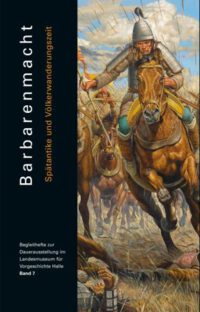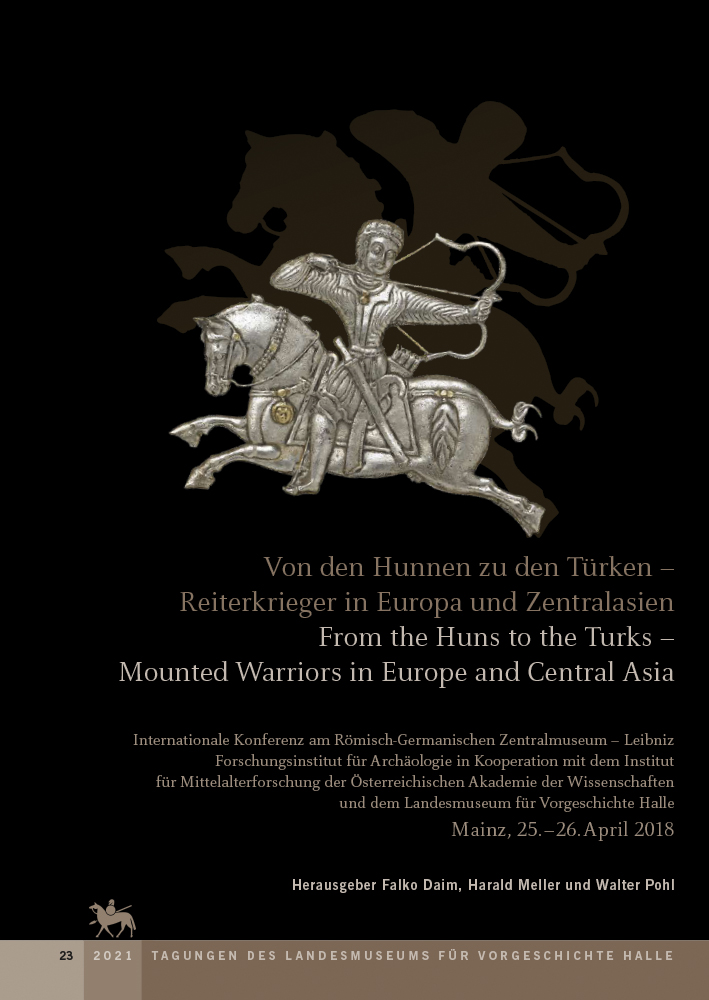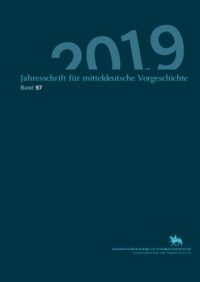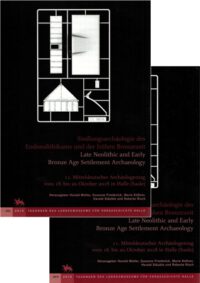Das europäische Selbstverständnis basiert hauptsächlich auf der »alten Welt«, den griechischen und römischen Kulturen des Mittelmeerraums, die mit denen des Nordens in Wechselwirkung standen. Tatsächlich aber war Europa schon immer in engem Kontakt mit der eurasischen Steppenregion, von wo Impulse, Technologien und Güter aller Art in den Westen gelangten. Immer wieder kamen auch mächtige Reiterverbände dorthin, ließen sich nieder und knüpften Kontakte zu den europäischen Gemeinschaften. Während sich aus den »Reichen« der Bulgaren, Ungarn und Türken mittelalterliche und frühneuzeitliche Staaten entwickelten, verschwanden Sarmaten, Hunnen und Awaren von der Landkarte.
The European self-image is mainly based on the »Old World«, the Greek and Roman cultures, which interacted with the Nordic ones. But in fact, Europe has always been in close contact with the Eurasian steppe region, and thus received stimuli, technologies, and goods of all kinds. But time and again, powerful confederations of mounted warriors also came to the West, settling here and establishing contacts with the European entities. While the »empires« of the Bulgarians, Hungarians, and Turks transformed into medieval and early modern states, the Sarmatians, Huns, and Avars disappeared from the map.
Inhaltsverzeichnis:
Vorwort der Herausgeber /Preface of the editors
Zentralasien/Central Asia
Gergely Csiky
• The transformation of horse riding in the steppes during the 1st millennium AD. Considerations on the spread of stirrups in Eurasia
Johannes Preiser-Kapeller
• Large-scale imperial urbanism in early medieval Eurasia (7th–9th century CE): an essay across the nomad-sedentary divide
Matteo Compareti
• Huns and Turks in »Sino-Sogdian« funerary monuments and Sogdian paintings
Sören Stark
• A »Rouran perspective« on the northern Chinese frontier during the Northern Wei Period. Some thoughts on the Yihe-nur tombs (Inner Mongolia)
Rund um das Schwarze Meer/Around the Black Sea
Nick Evans
• The womb of iron and silver: Slavery in the Khazar economy
Richard Foltz
• The Caucasian Alans between Byzantine Christianity and traditional paganism
Neslihan Asutay-Effenberger
• »Türkische Dreiecke« in der Überleitungszone und die Datierung einiger Höhlenkirchen Kappadokiens
Rustam Shukurov
• The oaths of Asians in Byzantine service in the 11th–14th centuries
Die mitteleuropäischen Steppenreiche/The Central European Steppe Empires
Bence Gulyás
• Ethnical identification of the steppe people – a methodological approach
Timo Stickler
• Der Einfluss der Hunnen auf die Entwicklung des spätrömischen Reiches – und umgekehrt
Walter Pohl
• The Avars in a Central Eurasian perspective
Tivadar Vida
• The process of the settlement of the Carpathian Basin by the Avars and their configuration of power
Falko Daim
• Objects and motifs. On visual communication in the Avar Empire
Nad’a Profantová
• Luxus aus dem Süden. Das Depot aus Domoušice, Bez. Louny, und die Fernkontakte Böhmens im 8. Jahrhundert
Panos Sophoulis
• The Bulgar paradox: A horse-powered (?) elite in the Balkans
Todor Chobanov
• Medieval temples of a pre-Christian religion and their priests
Ádám Bollók and János B. Szabó
• Árpád’s people: Early Medieval steppe society and national ancestors. 9th century Hungarian history as reflected in chapter 38 of the De administrando imperio
Stefan Albrecht
• The Magyar raids – a common European trauma?

 Barbarenmacht Spätantike und Völkerwanderungszeit - Dauerausstellung im Landesmuseum Halle (Sachsen-Anhalt) Heft 7
Barbarenmacht Spätantike und Völkerwanderungszeit - Dauerausstellung im Landesmuseum Halle (Sachsen-Anhalt) Heft 7 




